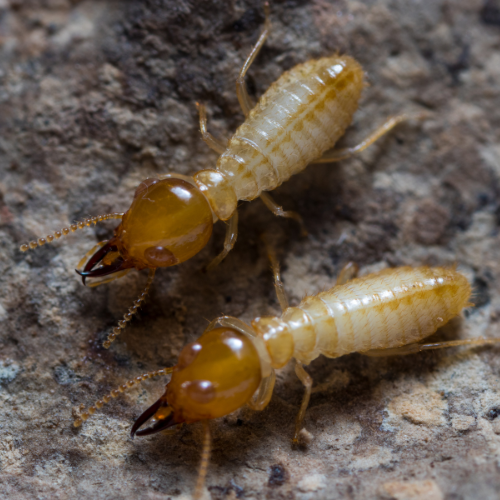Subterranean Termites

Proud Supporter of Disabled Veterans
No Contracts
Services provided without written contracts.
Introduction to
Subterranean termites are one of the most destructive pests, known for their ability to cause significant structural damage to buildings and homes. These termites live in colonies underground and build intricate tunnel systems to reach food sources. They feed primarily on wood, compromising the integrity of structures over time. Understanding how to identify, prevent, and professionally manage subterranean termites is crucial for protecting property from extensive damage. This article explores the recognition, biology, habits, prevention, and professional handling of subterranean termites.
Recognition
Subterranean termites are small, pale insects, typically measuring 1/8 to 3/8 inch in length. They have soft bodies and are usually creamy white to dark brown in color. These termites are often confused with ants, but they can be distinguished by their straight antennae, uniform waist, and broad, beaded antennae. The presence of mud tubes along walls, foundations, or crawl spaces is a common sign of an infestation. Additionally, discarded wings near windowsills or entry points indicate that winged reproductives, or swarmers, have entered the structure.
Biology
Subterranean termites belong to the family Rhinotermitidae and are social insects living in colonies that can number in the hundreds of thousands to millions. A colony consists of three primary castes: workers, soldiers, and reproductives. Workers are responsible for foraging, feeding the colony, and building tunnels. Soldiers have large mandibles and defend the colony against predators. Reproductives, including the king and queen, are responsible for mating and laying eggs. Subterranean termites primarily feed on cellulose, found in wood, paper, and other plant materials. They require moisture to survive, which is why they build mud tubes to maintain a humid environment while foraging.
Habits
Subterranean termites are most active in warm, humid environments and prefer to stay hidden underground or within wooden structures. They build extensive tunnel systems to connect their nests to food sources, allowing them to travel undetected. These termites are attracted to moisture and often invade structures where wood is in contact with soil or where there is excessive moisture due to leaks or poor drainage. Swarming usually occurs in spring when winged reproductives leave the colony to establish new nests. Subterranean termites are highly efficient at breaking down cellulose, making them particularly destructive to wooden structures.
Prevention
Preventing subterranean termite infestations involves reducing moisture levels and eliminating potential entry points. Ensure that gutters and downspouts direct water away from the foundation, and fix any leaks promptly. Use vapor barriers in crawl spaces and ensure adequate ventilation to reduce humidity. Avoid wood-to-soil contact by using concrete supports for wooden structures and maintaining a gap between soil and wooden parts of buildings. Regularly inspect the foundation, basement, and crawl spaces for signs of termites, such as mud tubes and damaged wood. Consider using treated wood for construction and installing termite barriers during building.
Professional
If you suspect a subterranean termite infestation, it is crucial to seek professional pest control services immediately. STL Pest Control offers specialized treatment plans to manage and eliminate subterranean termites. Their experienced technicians will conduct a thorough inspection to identify infestation sites and assess the extent of the damage. They use a combination of liquid termiticides, baiting systems, and physical barriers to eradicate termites and prevent their return. STL Pest Control also provides ongoing monitoring and maintenance to ensure long-term protection against termites. Professional intervention is essential for effectively managing termite infestations and safeguarding your property.



Our Office







